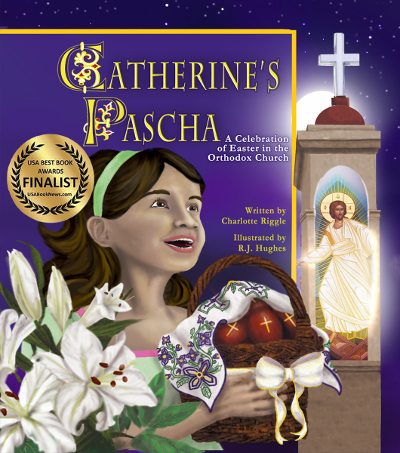When I looked at the calendar, I saw that today was the Synaxis of the Archangel Gabriel. “But wait!” I said to myself. “The Synaxis of Gabriel is on the day after the Annunciation! In Lent. But it’s not Lent. It’s July!”
I looked at the calendar again. If today is a synaxis, that means yesterday must have been a feast celebrating something that Gabriel was involved in. That’s how synaxes work. We celebrate the Baptism of our Lord on one day, and the Synaxis of St. John the Baptist the next. We celebrate the Birth of Jesus on one day, and the Synaxis of the Theotokos the next.
So, what was celebrated yesterday?
The Martyrs Proclus and Hilary. I looked up their stories. Nothing about Gabriel.
We also celebrate St. Veronica, and St. Paisios of the Holy Mountain. Nothing about Gabriel there, either.
There’s the other kind of synaxis – the feasts where we celebrate a bunch of saints on the same day. The Synaxis of the Holy Apostles. The Synaxis of the Seventy. The Synaxis of the Holy Fathers of the First Ecumenical Council. The Synaxis of the Holy Fathers of the Second Ecumenical Council. (And Third, and Fourth, and Fifth, Sixth, and Seventh.)
And, of course, the Synaxis of the Archangel Michael and All the Angels on November 8. Gabriel gets remembered then. But the calendar clearly says that today is the Synaxis of the Archangel Gabriel. Not Gabriel and a bunch of other saints or angels.
Celebrate! Celebrate! Celebrate!
So why is today the Synaxis of the Archangel Gabriel?
It goes back to the ninth century. Some sources suggest that a church in Constantinople may have been dedicated to Gabriel on July 13 (or perhaps October 16), and so the day of the dedication of the Church became a second feast for St. Gabriel.
What seems more likely, to me anyway, is that there were in the ninth century very many people and churches who had St. Gabriel as their patron. Because their name day fell during Great Lent, on the day following the Annunciation, they never felt like they got to celebrate it properly. So some priest or bishop decided to repeat the celebration in mid-July. Economia. On the long hot days of July, it’s good to have something to celebrate.
Over time, people decided that, because the March feast day celebrates Gabriel’s participation in the Annunciation, this feast day would celebrate all of the times he appeared to people throughout history. So we celebrate his appearances to Moses and to Daniel. His appearance to St. Anna, the Grandmother of Jesus. His appearances to Zaccharias, to Mary in the temple, to Joseph, to the shepherds, to the myrrh-bearing women.
So I suppose this feastday could be seen as a special sort of synaxis, a synaxis of appearances.
For all who have St. Gabriel as your heavenly patron, happy name day! May God grant you many years!
About the Iconographer
Randi Maria Sider-Rose is an iconographer who lives and works in Pittsburgh, Pennsylvania. I met her at the St. Emmelia Homeschool Conference at Antiochian Village, when she was kind enough to pick me up at the airport and get me to the conference. I didn’t learn until much later that she’s an iconographer. She provided a lovely explanation of the Icon of the Anastasis for this website, and she developed our glass icon project. You can see more of her work at Immanuel Icons.
Read More
17 essential picture books for Orthodox Christian kids: If you’re looking for picture books that include stories about Orthodox Christian people and traditions, you’ll find them on this list.
Disabilities and Special Needs in the Church: Some people are uncomfortable around people with disabilities. They don’t know what to do or say. You can get some advice here, from people with disabilities, to make it easier.
Justinian and Theodora: A Love Story: St. Theodora, the wife and co-ruler with St. Justinian the Great, is one of my very favorite saints.
Buy the Books!

These delightfully diverse books provide disability representation (Elizabeth, one of the main characters, is an ambulatory wheelchair user). They also give Orthodox Christian children the rare opportunity to see themselves in books, and children who are not Orthodox the chance to see cultural practices they may not be familiar with.
Catherine’s Pascha
FINALIST IN THE 2015 USA BEST BOOK AWARDS
Catherine doesn’t like vegetables. She doesn’t like naps, and she doesn’t like it when her mom combs her hair. She loves hot dogs, chocolate cake, and her best friend, Elizabeth. Most of all, she loves Pascha! Pascha, the Orthodox Christian Easter, is celebrated in the middle of the night, with processions and candles and bells and singing. And Catherine insists that she’s not a bit sleepy.
Celebrate the joy of Pascha through the magic of a book: Catherine’s Pascha. Available on Amazon, Bookshop.org, and my webstore.
The Saint Nicholas Day Snow
Shoes or stockings? Horse or sleigh? Does St. Nicholas visit on December 6 or on Christmas Eve? Will a little girl’s prayer be answered? When Elizabeth has to stay at Catherine’s house, she’s worried about her grandmother, and worried that St. Nicholas won’t find her. The grownups, though, are worried about snow.
Celebrate the wonder of St. Nicholas Day through the magic of a book: The Saint Nicholas Day Snow. Available on Amazon, Bookshop.org, or my webstore.



